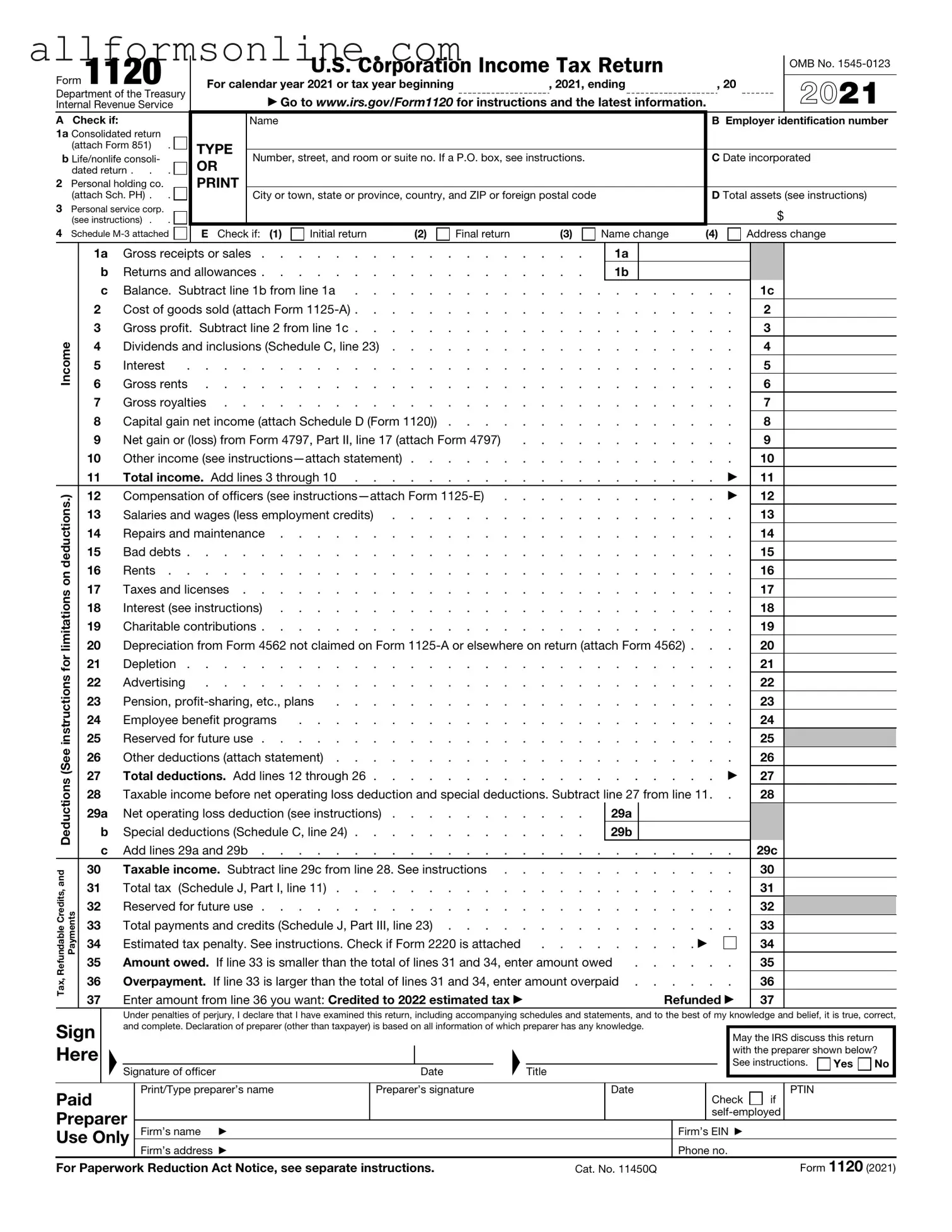What is the IRS Form 1120?
The IRS Form 1120 is the U.S. Corporation Income Tax Return. Corporations use this form to report their income, gains, losses, deductions, and credits. It is essential for corporations to file this form annually to determine their tax liability to the federal government.
Who needs to file Form 1120?
Any corporation operating in the United States must file Form 1120, regardless of whether it has taxable income. This includes C corporations, which are taxed separately from their owners. S corporations, however, use a different form (1120S) and are not required to file Form 1120.
What information is required on Form 1120?
Form 1120 requires various pieces of information, including the corporation's name, address, Employer Identification Number (EIN), and the total income and deductions. Corporations must also report any tax credits and calculate their tax liability based on the net income reported.
When is Form 1120 due?
Form 1120 is typically due on the 15th day of the fourth month following the end of the corporation's tax year. For most corporations that operate on a calendar year, this means the form is due on April 15. If the due date falls on a weekend or holiday, the deadline is extended to the next business day.
What happens if a corporation fails to file Form 1120?
If a corporation fails to file Form 1120 by the deadline, it may face penalties. The IRS can impose a failure-to-file penalty, which can accumulate over time. Additionally, failure to file can result in interest on any unpaid taxes, further increasing the corporation's financial burden.
Can Form 1120 be filed electronically?
Yes, Form 1120 can be filed electronically. The IRS encourages electronic filing as it is faster and often more secure than paper filing. Corporations can use IRS-approved e-file providers to submit their returns online, which can also help in ensuring accuracy and timely submission.
